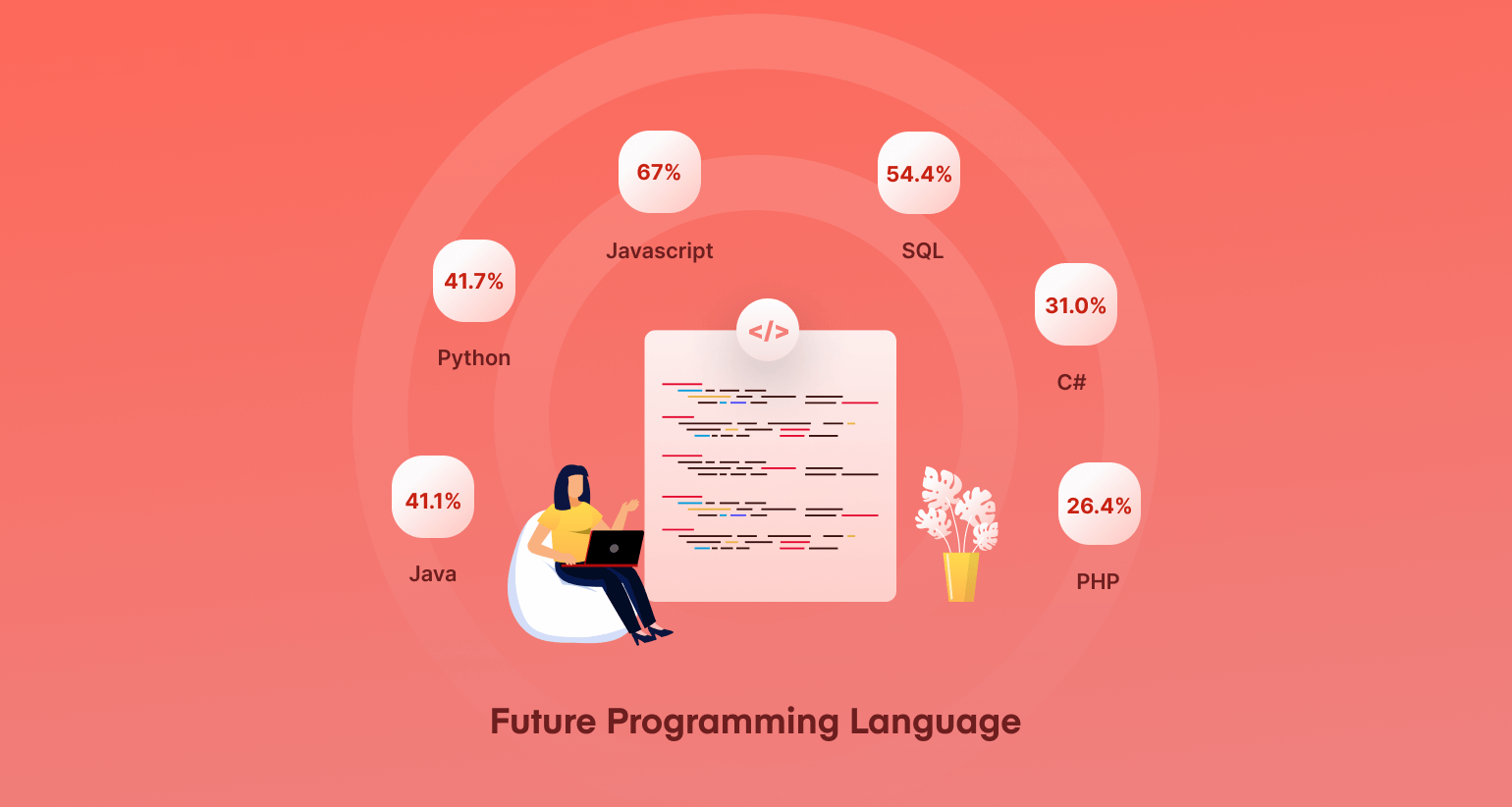
What Is the Future Programming Language? 17+ Code Languages for 2030
Which programming languages will be the most viable in the future? What is the future programming language? Well, it depends on a few crucial factors, such as simplicity, security, regular updates, performance, maintainability, and more.
These factors have affected the programming industry and made this a lucrative career option for the young generation. According to a survey, the demand for programming jobs will increase by 21% in 2028.
So, you may be thinking, why do I have to know this information? Because you should know the current state of this industry and the jobs around it to understand and predict the future of programming languages.
Let’s uncover more data on this topic.
- What Is the Concept of Future Programming Language?
- The Present Status of Programming Related Jobs
- 9 Qualities a Future Programming Language Should Have
- 17 Programming Languages that Will be Must-to-Learn Before 2030
What Is the Concept of Future Programming Language?

Programming language is a communication medium that allows humans to instruct machines to run specific tasks and functions. It converts general human principles like numbers, lines, words, color, and distance into machine-understandable output.
Every language has a different coding syntax, which programmers use to create specific programs. The difficulty level of a language depends on the coding syntaxes and rules. To write good code, developers must follow the best practices for programming.
According to various reports, 250-2500 programming languages exit today. Among them, we only talk about 50 general programming languages like Java, Python, C, and the rest of them are gone.
Wikipedia
Languages that are continuously updated since their releases have always been at the peak of demand. So, when we talk about future programming languages, these languages always come to the fore.
One such example is Python. In 2020, Python was the primary programming language for 80% of developers globally. A key reason behind this was its extensive libraries that facilitate data science, machine learning processes, and AI development.
Watch the Battle: Software Engineering vs Data Science
The Present Status of Programming Jobs

After the pandemic, programming jobs boomed rapidly. In recent years, the job market for programmers, and developers has exceptionally been better than other tech jobs.
Numerous companies have hired more programmers in recent years than in the last decade, which will continue in the coming years as well. According to BLS (Bureau of Labour Statistics), overall employment in programming jobs will increase by 13% starting from 2020 to 2030.
Moreover, they also projected that the growth rate of technology employment will be 8% faster than other general occupations.
U.S. News declared that, In 2023, software programming is ranked #2 in the best technology jobs category. ISA (Information Security Analysis) takes the #1 spot in this list. However, the projected jobs for this post are not even 1/3 of software engineer posts, which is 409,500.
Based on the above facts, we can assume that programming jobs will be a great career choice and continue to do so.
However, not all fields in the programming section will be increasing. BLS predicts that there will be a 9.9% decline in the computer programming field, which is 18,300 jobs.
9 Qualities a Futuristic Programming Language Should Have

Below, we have listed some of the most crucial qualities a futuristic programming language should have.
- Simplicity
It has to be simple, human-recognizable, and easily understandable. The simplicity of a language will make the learning process faster.
- Abstraction
Programming languages need to have abstraction, which is the ability to define complex code structures and the degree of usability.
- Portability
Portability is another essential quality. Portability is the ability of a computer program to run in a different operating system other than the operating system it was created. These languages are not bound to any machine or operating system and can operate in any computer operating system.
- Suitability
A well-structured programming language is suitable for application and game development.
- Include in Community
It has to be well-recognized and has a community of developers.
- Efficiency
Programming languages need efficiency, so they can efficiently convert machine codes and consume less memory while executing the task.
- Testable with Tools
A programming language should ensure tools to test, debug, maintain, and develop.
- IDE
Programming languages should have an IDE (Integrated Development Environment)
- Orthogonality
Orthogonality in a programming language is also a crucial quality.
Also Read- Best Websites for Preparing Code Interview
17+ Programming Languages that Will be Must-to-Learn Before 2030
These 17 languages will remain the perfect all-in-one programming languages suited for every type of work and environment.
1. JavaScript (Best Object-Oriented Language)

After being originated in 1995 by Sun Microsystem, Java has performed incredibly well in all popular operating systems. The best part about Java is that developers can write code and run it anywhere.
Java is also a popular programming language among developers. According to Statista, in 2021, JavaScript was the most used language by developers. 64.96% of programmers use JavaScript, and 35.35% use Java, which holds the 5th position. And this position will remain pretty much the same in 2024.
This incredible popularity of Java is due to its easy-to-use nature and simple functions. JavaScript is used for scripting web pages, adding effects, and executing complex actions on a website. Overall, it’s a website creation language.
2. C# (.NET Framework-Based Language)
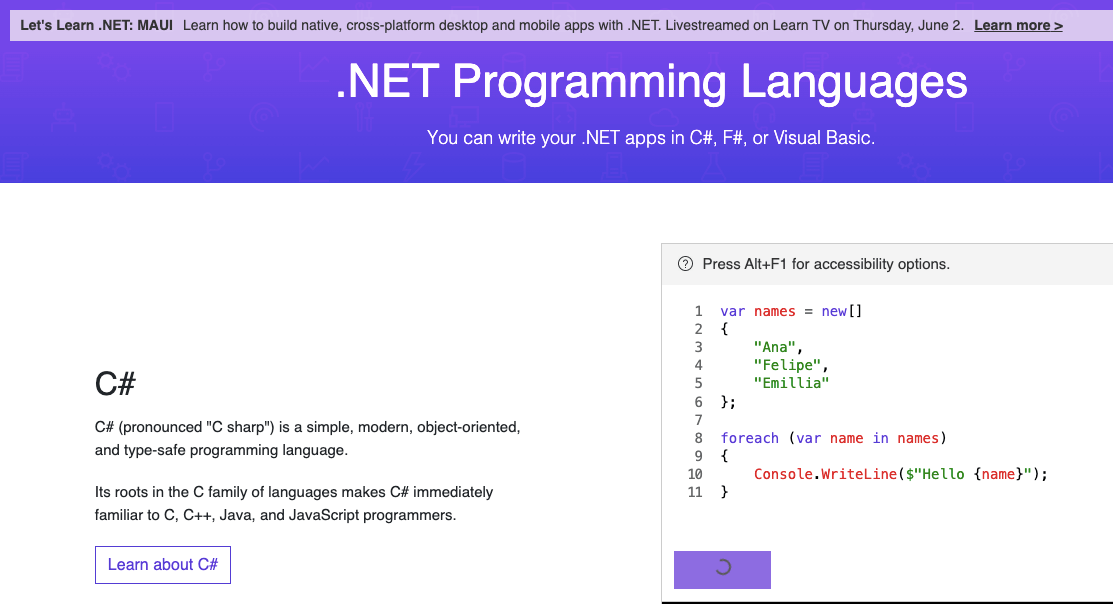
Another language that has held its position as the best mobile application development programming language is C#. In 2000, C was developed by Dennis M Ritchie in Bell Laboratories.
Back then, developers mostly used C# to write code for the Unix operating system. Later, some other operating systems also used C, like Microsoft and the Android operating system. Now, developers use C to make 34% of mobile games globally.
C# is known for performing complex programming tasks, yet this language is more efficient and easy to learn than other object-oriented languages. C# is pretty much being used in every type of programming operation, like OS, mobile application, software, protocol stacks, database programming, python interpreter, and game creation.
A growing and friendly community makes C# pretty popular among all-level developers.
3. Python (Best Efficient Programming Language)
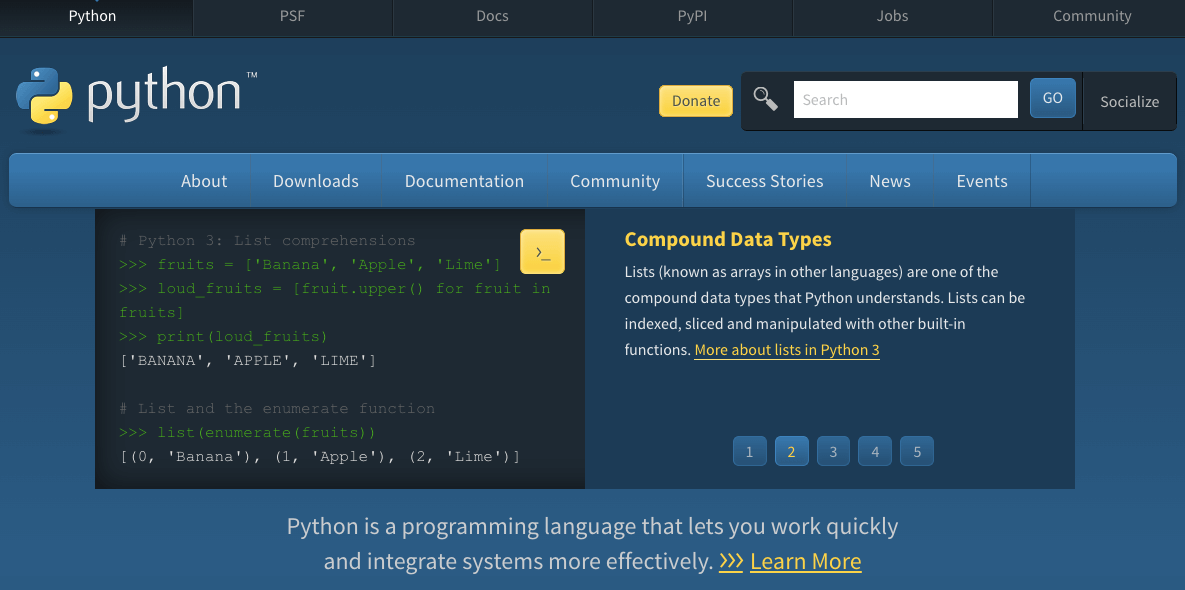
Python is by far the most human-understandable language out there. Well, most languages use tons of punctuation marks in code construction, which makes the writing process hard, and the checking and debugging process also becomes difficult.
In Python’s case, developers made this programming language as human as possible. Every line of code in Python contains fewer punctuation marks and uses English words more frequently. You can execute your codes before compiling them, which is pretty similar to PHP.
Most Python codes are easily defined and visible to human eyes. As we said earlier, Python is also quite popular among developers from different positions. It also has a library bulk that is portable and compatible with various operating systems.
For its versatility and ease of use, researchers predict that Python might be capable of becoming a universal programming language before 2030.
4. Kotlin (“Pragmatic” Programming Language)

Compared to other languages, Kotlin is a new programming language that was launched in 2016 to interoperate with Java.
It is also pretty similar to Java code structures and type inference. Kotlin’s pre-written codes or libraries depended on the Java library. However, the main difference is that Kotlin’s type inference can make the syntax more concise than Java.
Kotlin is primarily an alternative to Java but has given the developer a more precise and straightforward coding experience. In 2023, Kotlin will mainly serve in the Android app, front/back-end web development, data science, and multi-platform app development.
In the case of popularity, Kotlin is still an underdog. In a 2021 report by Statista, Kotlin was ranked 15th with 8.32% of users globally. But, it only informs us that Kotlin has to go a long way to surpass its successors.
However, some information suggests that Kotlin is one of the fastest-growing programming languages along with Rust, Ruby, HCL, and Go.
5. Swift (IOS Development Language)
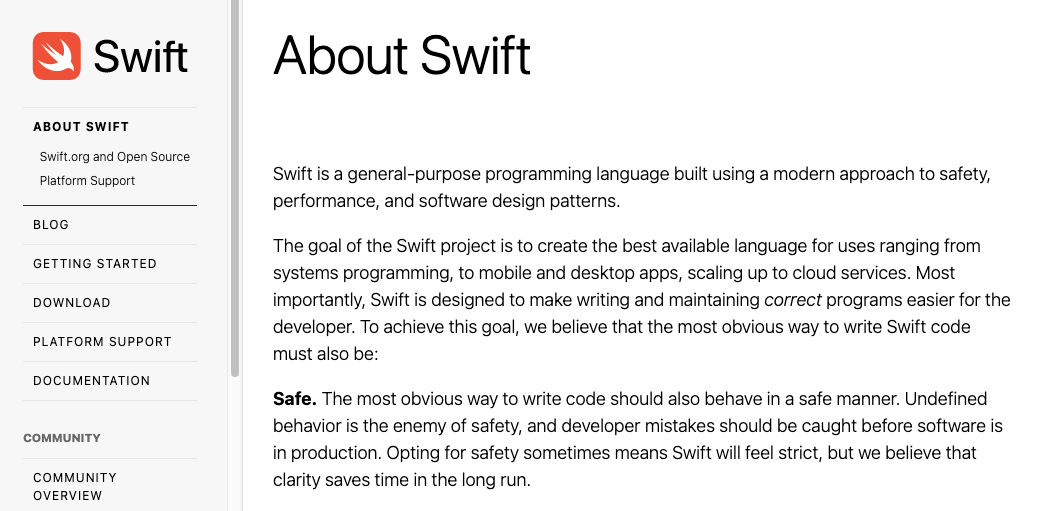
The Apple operating system and its environment are different from other operating systems like Microsoft, Linux, and Ubuntu. Swift is a programming language specially designed for building apps for Mac, iOS, Apple TV, and Watch.
Swift is an open-source programming language created by Apple. One of the best benefits of Swift is that it makes every element of a coding array safe for the programmer by eliminating any unsafe classes of code.
Another feature of Swift is that it pre-checks every element. This feature includes the initialization of variables, overflow of any integers, and memory management. Every syntax in Swift is tuned, making the intent-defining process easy.
Swift makes the code-writing process efficient and makes the maintaining process of APIs and syntax easier.
6. PHP (Scripting Language)

PHP (Hypertext Preprocessor) is one of the most server-side scripting languages alongside Ruby, Julia, Bash, and Lua. PHP is pretty similar to Javascript.
The core difference is that the written codes in PHP are executed on the server and then sent to the client. This process ensures that the client always receives the result of the script but not the underlying code. With PHP, you can literally modify any HTML files in web server processes.
PHP is a pretty beginner-friendly programming language and has exclusive features for professionals.
PHP is often used for building websites with many dynamic and animation elements like scrolls, rotating headers, content expandability, and dynamic imagery. Some further PHP uses are server-side scripting, development for desktop applications, and web applications.
7. Julia (Dynamic Programming Language)
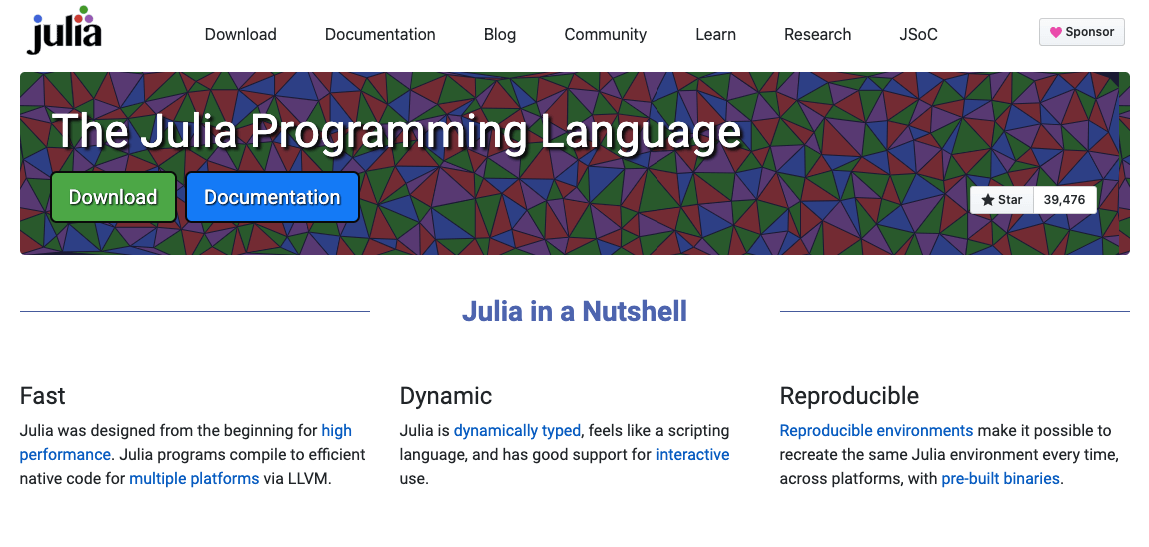
Julia was originated in 2009 by Jeff Bezanson and Stefan Karpinski. Their idea was to build a free, open-source programming language that is fast, high-level, and interactive. And, it pretty much was successful in its mission.
One of the main reasons to choose Julia is its fast, efficient, and high performance. In Julia, you can write on the platform instead of interpreting before. Moreover, this language has always been performing better than Python and Matlab in language design.
Julia is also becoming pretty popular among developers. Here are some data from Julia computing,
- From January 1, 2023, the total number of Julia downloads was 35 million.
- Julia has received 250k stars on GitHub.
- From the downloads, the number of registered packages was 7,400 in April 2023.
- Julia positioned 25th from 47th place in the May TIOBE index.
Based on these numbers, we can assume that Julia has an increasing user community. What makes Julia unique is it is improving day by day. The current Julia 1.7.3 version offers incredible features like package management, metaprogramming, and profiling.
The pre-built binaries in Julia help a developer create the same environment entirely every time on different platforms.
8. R (Machine Learning Language)
R is one of the best programming languages for database analysis, graphic representations, and reporting. This language allows the programmer to create branches and loops through functions. For efficiency, R also integrates with other programming languages like .NET, C++, Python, and FORTRAN.
Another benefit of R is that it is well-developed and effective with many crucial programming elements like loops, recursive functions, and conditionals. R is pretty secure and has an adequate data handling and storage structure.
While writing codes in R, you will see some operator suites that can efficiently perform calculations on lists, arrays, and metrics. It also has a wide range of data analysis tools for the developer.
R provides the user with a massive library with interactive graphics and supports cross-platform operations. Some companies that use R as their primary language are LinkedIn, Amazon, and Flipkart.
9. TypeScript
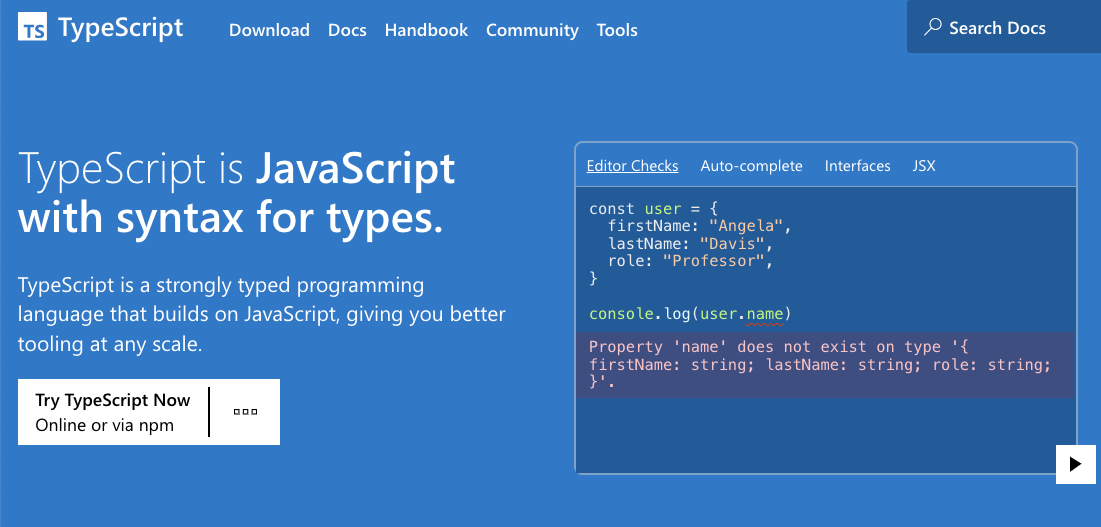
TypeScript is a superset of JavaScript that adds static typing to the language, enabling developers to catch type-related errors during development. It compiles down to plain JavaScript, allowing developers to write code using modern ECMAScript features while benefiting from static type checking.
TypeScript is popular in web development, especially for building scalable and maintainable applications. Its static typing helps developers identify issues before runtime, enhancing the reliability of large JavaScript codebases. It is commonly used for front-end development, server-side applications, and Node.js projects.
10. SQL (Structured Query Language)
SQL, or Structured Query Language, is a domain-specific language used for managing and manipulating relational databases. Its primary function is to facilitate operations like querying databases, defining and modifying schemas, and managing data.
It allows users to retrieve specific data from databases, insert new records, update existing data, and delete information. SQL is vital for managing structured data efficiently and is widely used in various applications where data storage and retrieval are fundamental requirements.
11. Java
Java is a versatile, object-oriented programming language renowned for its portability and flexibility. Developed by Sun Microsystems, Java’s “write once, run anywhere” philosophy allows developers to create applications that can run on any platform with a Java Virtual Machine (JVM).
It finds extensive use in web development, enterprise applications, Android app development, and large-scale software projects. Java’s strong typing, object-oriented features, and vast standard library make it a popular choice among developers for building robust, platform-independent applications.
12. Golang (Go)

Go, commonly referred to as Golang, is a statically typed, compiled language developed by Google. It is designed for simplicity, efficiency, and concurrency, making it well-suited for building scalable and high-performance applications.
Go’s syntax is straightforward, emphasizing readability and ease of use. It has strong support for concurrent programming, allowing developers to create efficient, multi-threaded applications. Go is commonly used for cloud services, network applications, microservices, and any scenario requiring efficient concurrent processing.
13. C++
C++ is a high-performance, general-purpose programming language that builds on the foundation of the C programming language. Known for its efficiency and flexibility, C++ allows low-level memory manipulation and provides a high level of control over hardware, making it suitable for performance-critical applications.
It incorporates object-oriented programming features, allowing developers to organize code in reusable structures. C++ is widely used in system/software development, game development, client-server applications, and applications where performance optimization is crucial.
14. Rust
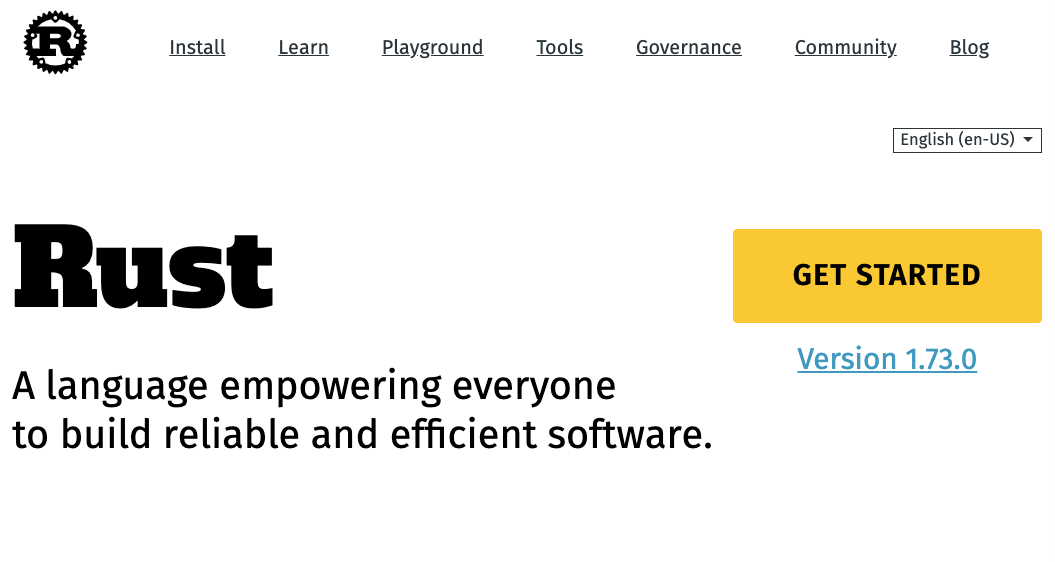
Rust is a statically typed programming language focused on safety and performance. It ensures memory safety and prevents common programming bugs such as null pointer dereferences and buffer overflows through its ownership model and borrowing system.
Rust is well-suited for systems programming, game engines, web assembly, and operating systems development. Its strong emphasis on safety without sacrificing performance has made it popular among developers seeking a balance between low-level control and modern language features.
Rust’s memory safety guarantees make it a reliable choice for building robust and secure software systems.
15. WebAssembly (Wasm)

WebAssembly, often abbreviated as Wasm, is a binary instruction format designed as a portable target for the web. It allows high-performance code execution on web browsers, enabling developers to write programs in languages like C, C++, and Rust and run them on the web platform.
Wasm code is designed to be fast to decode and execute. It provides a secure and efficient way to run code on browsers, enabling the development of complex applications such as online games, video and audio editing tools, and more.
Wasm is a cross-browser technology, supported by major web browsers like Chrome, Firefox, Safari, and Edge, making it a powerful tool for modern web development.
16. Ruby
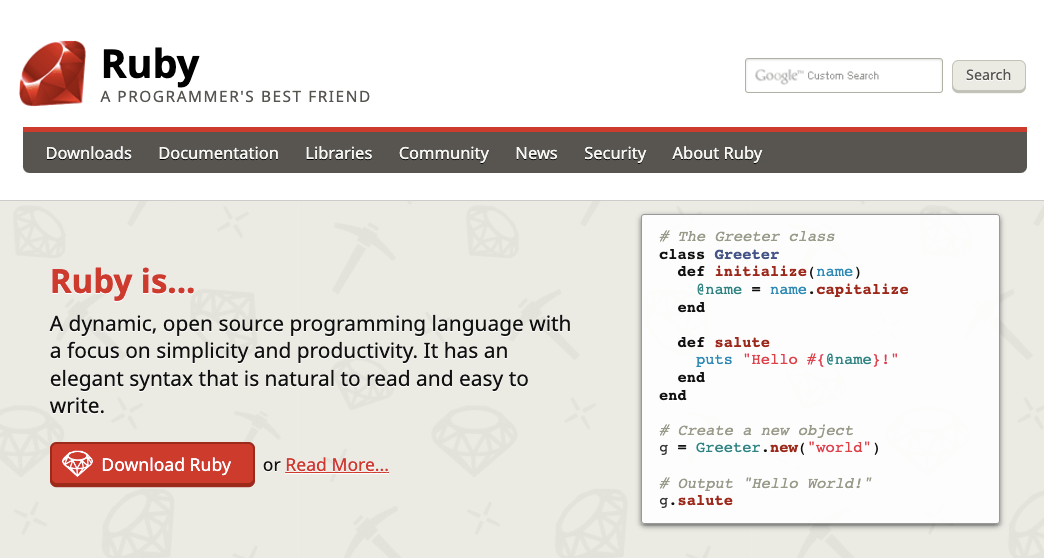
Ruby is a dynamic, object-oriented programming language known for its simplicity and productivity. Designed with a focus on programmer happiness, Ruby’s elegant syntax and readability make it a popular choice among developers, especially for web development and scripting tasks.
Ruby’s object-oriented nature allows developers to create reusable and maintainable code by organizing data and behavior into classes and objects. It features automatic memory management and dynamic typing to enable developers to write code quickly and efficiently.
It has a robust ecosystem of libraries and frameworks, such as Ruby on Rails, which has contributed to its popularity in web development. While it might not be as prevalent as some other languages, Ruby remains a powerful tool in the hands of developers, particularly for web applications and startups seeking rapid development.
17. BASH (Shell Scripting)
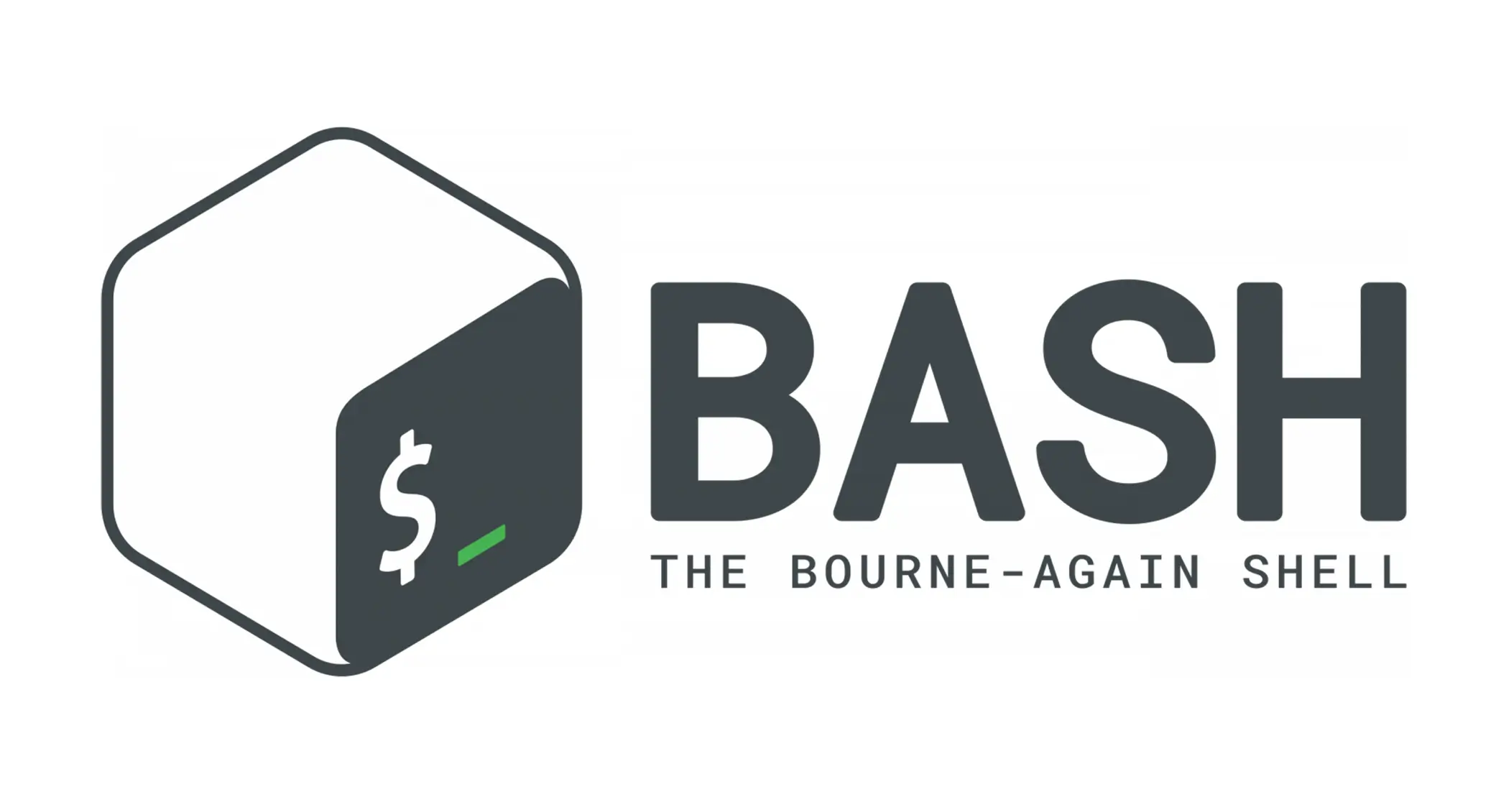
BASH stands for Bourne Again SHell. It’s a command-line shell and scripting language. It’s used in Linux and Unix-like operating systems. It serves as both an interactive command interpreter for users and a scripting environment for automating tasks.
BASH provides a user-friendly interface for executing commands, managing files, and running scripts, which makes it a fundamental tool for system administrators, developers, and power users.
You can navigate the file system, manipulate files, and directories, and program efficiently. You can also automate repetitive tasks, like backups, system monitoring, and software installation to save valuable time and reduce the likelihood of human errors.
Another key feature of BASH is its command history functionality. You can recall and reuse the previously executed commands to streamline workflow and productivity. It supports various programming constructs, such as loops, conditionals, and functions.
18. Quantum Programming Languages
Quantum Programming Languages are specialized languages designed for quantum computing, a field that explores the use of quantum-mechanical phenomena to perform computation.
Unlike classical computers, quantum computers utilize quantum bits or qubits, which can exist in multiple states simultaneously due to the principles of superposition and entanglement.
Quantum programming languages, such as Qiskit, QuTiP, and Cirq, provide abstractions and tools for developers to design and implement quantum algorithms. These languages allow researchers and developers to work with quantum gates, circuits, and quantum algorithms. They pave the way for advancements in fields like cryptography, optimization, and artificial intelligence.
More Read- How to Prevent Software Piracy
Finalizing on What is the Future Programming Language
These 17 selected languages managed to get a spot on the list because, in 2023, these top languages are performing incredibly better than any other programming language, and the flow of improvement will continue in the future.
However, it doesn’t mean that other languages are not as suitable as future programming languages. Besides the list, you can add Scala, Matlab, HTML, CSS, etc.
So, what do you think is best in every way? Let us know in the comments.
If you have any queries on the topic What is the future programming language, then don’t hesitate to ask. Our experts will answer every one of your questions.
Have a good day!
Subscribe To Our Newsletter
Don’t miss any updates of our new templates and extensions
and all the astonishing offers we bring for you.
